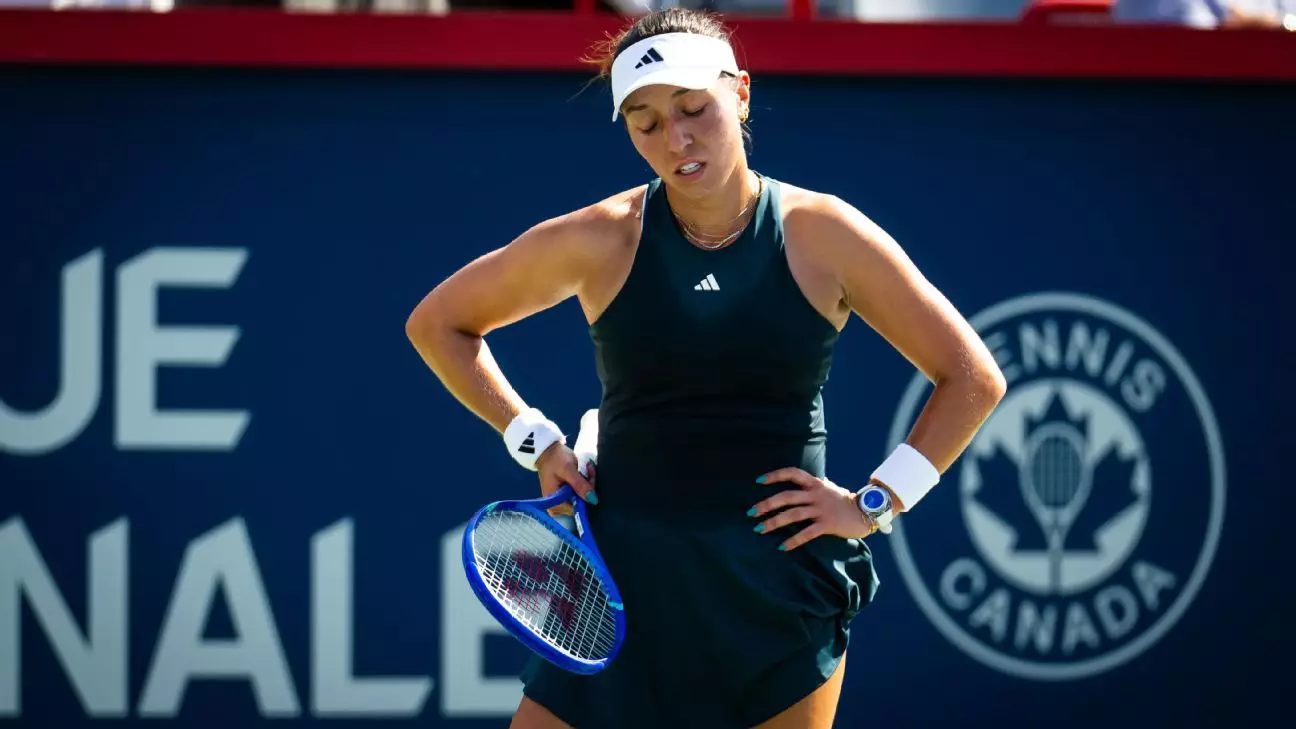Tennis has always been a sport of dramatic twists, and recent tournaments highlight this better than ever. The story of Anastasija Sevastova’s victory over Jessica Pegula exemplifies how perseverance and strategic resilience can overturn expectations. Once a top-15 player, Sevastova’s current ranking of 386 belies her capacity to challenge and defeat a high-seeded opponent. Her victory is a testament to the unpredictable nature of sports; that age and ranking are not definitive barriers to excellence. The Latvian’s relentless spirit, especially after suffering serious injuries and taking long hiatuses, underscores a fundamental truth: grit often eclipses mere numerical superiority.
Sevastova’s recent form is remarkable, not because she’s been dominant in every match, but because she refuses to accept her setbacks as final. Her recovery from a torn ACL, which sidelined her during critical phases of her career, echoes a deeper narrative—success is not linear. Instead, it’s about bouncing back stronger, reinventing oneself through adversity. Her win over Pegula, a player who has been touted as a rising star and former champion, isn’t just a fluke; it’s a rallying cry to underdogs everywhere that persistence can defy the odds.
The Illusion of Top Tier Certainty in a Volatile Field
The tournament’s top seeds often seem invincible—yet, recent results show that this facade can be fragile. Jessica Pegula’s early exit reflects a larger truth: even the most promising players are susceptible to losing streaks caused by inconsistency or mental fatigue. Her admission of feeling “sloppy” indicates that even elite athletes battle with self-doubt and fluctuations in their form. Winning titles doesn’t guarantee mental stability or relentless peak performance, especially in a sport where confidence can rapidly ebb and flow.
The Italian Open winner Iga Swiatek’s commanding win in her match illustrates another dimension—when at her best, she’s a relentless force. But her success also highlights the importance of staying ahead mentally, physically, and tactically. For athletes like Swiatek, continuing to adapt to new challengers and evolving game styles remains crucial. Her upcoming match against Clara Tauson signals that even clutch players must constantly refine their approach to sustain dominance.
The Significance of Resilience Beyond the Court
Sevastova’s story is more than just a tennis upset—it’s an inspiring narrative about life’s broader struggles and the unwavering pursuit of goals. Her return from maternity and a serious knee injury reinforce that setbacks are merely setups for comebacks. In a sport still riddled with physical risks and emotional pressure, her resilience serves as a reminder that perseverance is an essential virtue—not just for athletes but for anyone facing difficulties.
Her victory also challenges stereotypes around aging in tennis. At 35, she proves that experience, mental toughness, and a fighting spirit can compensate for the decline in physical agility. Her willingness to stay on court, push through pain, and aim for victory exemplifies how mental fortitude—rather than age-related stereotypes—drives long-term success.
Meanwhile, young stars like Naomi Osaka and Emma Raducanu demonstrate that resilience isn’t confined to veterans. Osaka’s strategic intelligence and Raducanu’s quick adaptation show that new generations are capable of remarkable comebacks. But the true power lies in their capacity to accept losses, learn from them, and emerge stronger—traits that define champions in every era.
Redefining the Meaning of Victory and Failure
What these recent results reveal is that tennis is less about perfect execution and more about adaptability. The constant fluctuations in players’ performances serve as a lesson: failure is often the stepping stone to greatness. Monroe’s loss for Pegula, Raducanu’s early exit, or Sevastova’s stunning upset are moments that test a player’s mental strength. Those who view setbacks as opportunities for growth tend to forge more resilient careers.
In this landscape, success is no longer solely dictated by rankings or pristine stats but by the ability to face challenges head-on and adapt swiftly. Players like Keys, Svitolina, and even Sevastova show that bouncing back from adversity and seizing opportunities define true greatness. As fans, we are reminded that behind the glamour and national pride lies a raw human story of grit, persistence, and reinvention.
The sport’s unpredictability keeps us hooked, underscoring that resilience, both on and off the court, is what ultimately separates fleeting talent from lasting legacy—the kind that inspires beyond the tennis world.


Leave a Reply